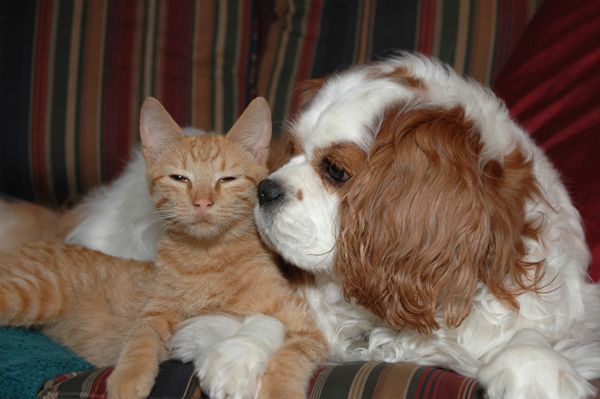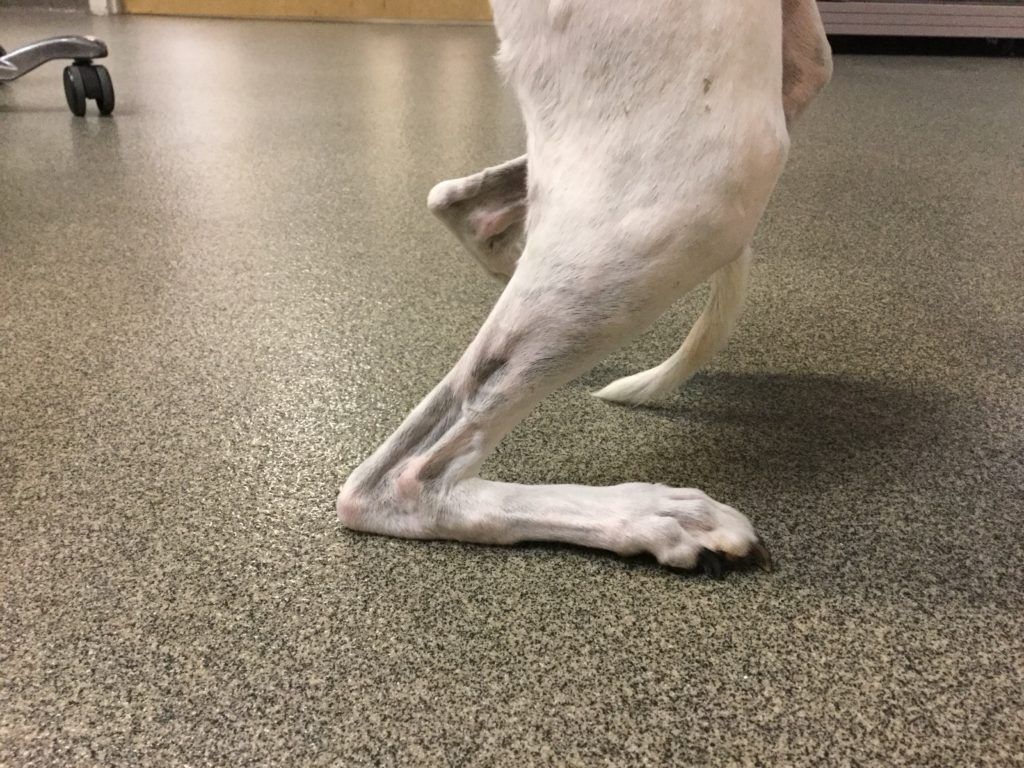9 Ways to Help Cats and Dogs Get Along Better
Earl Gerald Lapuz • October 2, 2015

These nine things will help your cat and new dog overcome the language barrier and find love.
I don’t buy into the idea that cats and dogs naturally hate each other. Why should I, when I saw the two species enjoying one another’s company — and occasionally even snuggling together — every day of my formative years? Dogs and cats do speak different languages, though, and they need us to help them understand one another. Here are nine things you can do to help your cat and a new dog live in harmony.
1. Prepare your home
Create a safe space for your cat by putting a baby gate on the door to his favorite room. This will allow him to get away from the dog if he needs a break. Put your cat’s litterbox in that room and feed your cat in a place out of the dog’s reach. Give your cat some tall furniture so he can watch the dog from above.
2. Consider each animal’s age
A puppy may be a better choice for a cat household. The size difference is less pronounced than with an adult dog, and the puppy will quickly learn the cat’s boundaries and limits: There’s nothing like a claws-out swat on the nose to tell a dog “enough is enough!”
3. Know the dog’s background
If you adopt your dog from a shelter (and I highly suggest that you do), be as sure as possible that the dog is familiar with cats and will interact safely with them.

7. Keep the dog on a leash when she meets the cat
It’s crucial to restrain the dog when you introduce her to the cat. Interspecies meetings can be tense because of differences in body language. A wagging tail can mean “nice to meet you, let’s play” in dog language, but the same “wagging” tail means something very different to a cat. Dog play gestures can also be intimidating to a cat.
8. Train your dog
As soon as possible, teach the dog to respond instantly to safety commands like “come,” “sit,” “stay,” “down,” and “drop it.” And, of course, the more training you give your dog, the happier she — and you — will be.
9. Watch for signs of strife
If your cat is always hiding when you’re home or if the dog is becoming aggressive with your cat or other people and pets, get help from a dog trainer or a behaviorist.

4. Know your cat’s background, too
If your cat has been socialized to understand and live with dogs, you’ll be much more likely to succeed as a “bi-petual” household. On the other hand, if your cat was attacked or otherwise traumatized by dogs, you may want to avoid bringing one into your household.
5. Keep in mind that some dog breeds (and breed crosses) work better than others
When a cat feels threatened, his natural instinct is to flee, and if the dog’s natural instinct is to chase, the results can be tragic. Some breeds are more likely to chase than others — sight hounds and terriers, for example.
6. Exercise the dog before introducing her to your cat
Take the dog on a nice, long walk or engage her in an energetic game of chase-and-retrieve before you bring her home. If the dog has used up all of her extra energy, the odds are better that she won’t freak your cat out with her enthusiastic greetings.

Yes, you can have a harmonious multi-species home. It takes some work, for sure, but it’s well worth the effort if you’ve dreamed of getting a dog brother or sister for your cat.
Original article by JaneA Kelley Posted in Catster Tips.











